Offset, offset printing – is one of the forms of flat printing. It involves transferring an image from a flat print form to a printing substrate e.g. paper. This operation is carried out by means of an intermediate cylinder covered with rubber, called a “Obciągiem”.
Offset printing is divided into:
- offset sheet printing – in this type of offset printing the substrate is a sheet.
- offset coil printing – in this case the substrate is the coil,
- coldset – offset “cold” (fixation of paint by soaking in paper)
- theatset – offset “hot” (fixation of paint by soaking in paper and evaporation at high temperatures) covered with paint a long ribbon of paper before fold passes through a heat-heated to high-temperature drying tunnel.
Coldset and heatset are typically used for high-volume printing, such as newspapers, magazines, phone books, etc. This type of printing is grounded on calendered and coated papers.
Water offset as the name suggests is associated with printing using a moisturizing solution. In the classic Offset, that is aqueous, there are hydrophilic points on the printing surface, (these moisten the aqueous solution) and hydrophobic places, (these are moistened with printing ink). There is mutual re push-off between these two elements, the aqueous solution environment, and the oil paint offset environment. It is extremely important in this environment to achieve a state of equilibrium water-paint. The moistened solution is about 85%-95% water. Additional substances that are mixed in an aqueous solution include isopropyl alcohol (IPA). It should be noted that there will be a general trend towards reducing IPA in favour of buffers.
Anhydrous offset – a form of offset printing without the use of a wetting agent. For this form of printing, special inks with high surface voltages are used, as well as special printing forms – silicone forms. A positive feature of anhydrous offset is the absence of problems related to the contact of the solution with the printed ink (emulsification of the paint), and with the substrate (moisture of the substrate). Anhydrous printing allows thicker, i.e. more than 3.5μm. than in a traditional offset, the application of paint. This is possible thanks to a special printing form analogous to concave printing. Due to the cost of anhydrous printing and technological problems, it occupies a relatively small niche space.
The process of inducing an offset form: is the act of removing a copy layer from the site of a non-printing mold by dissolving it in the remover.
Offset printing
The birth of offset took place in the 18th century with the invention of lithography, a new printing technique. The son of a Royal Theatre actor, Alois Senefelder studied the law imposed on him by his father. However, with his death, Alois interrupted his studies and, wanting to enter adult life, followed in his footsteps and became an actor. Soon it turned out that he was miserable actor, but a wonderful screenwriter. Despite the fact that he did not publish much work, he gained an audience.
Due to the high printing costs, the sale of his works was paltry. In order to speed up the publication of materials, he was often in the printing house. Over time, he said, printing is no philosophy. He gein copper plates which he then began to engraver. This work was not the easiest and required the image to be made on the plate in such a way that it was a mirror image of the intended effect. One day, his mother asked him for a laundry list. Alois, without a pen at hand, wrote it down with soot mixed with soap and wax on the stone. Suddenly, he noticed that places covered with a mysterious substance do not absorb water, but paint sticks to them
After this event, Alois made drawings on the stone, moistening the surfaces of the plate with water and applying paint. And so the matrix was created. Senefeldr’s other successful experiment was to transfer the drawing from paper to limestone. The result was the ability to make drawings right legibly, the ability to resume order and accurately copy the same work on a single plate. Alois became the father of lithography and patented his invention.
Lithography initially spread rapidly, but had a serious drawback. It did not allow fast printing due to flat stone slabs. Lithography slowly gave way to typography where the printing plate received a new cylinder shape. The new plates were made of zinc and aluminium. They were put on a special cylinder and thus transferred to paper. The disadvantage of this solution was the direct contact of the board with paper. As a result, the drawing on the board quickly clashed. This printing model has never spread.
An American paper manufacturer, printed it by accident with rubber. By inattention, the employee did not put the paper under the rubber, as a result of this, after re-printing the paint on the rubber, it turned out that the drawing carried by the rubber is clearer and cleaner. These were the beginnings of moving work through rubber to paper. Indirect printing helped to extend the life of the plates and gave rise to a new technique – Offset Printing.
The photograph used in the lithography made the appropriate glass plates invented, through which rasterized film was obtained when taking the photo. Color photography started offset printing in color using process inks. Offset printing Kraków – the production of presensibilized offset plates on an industrial scale opened the door to the path of development of offset printing.



